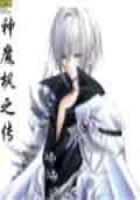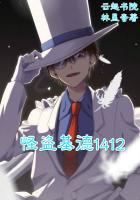About the end of May, the coloring of the nymph, hitherto a light red, alters greatly and forecasts the coming transformation. The head, the thorax and the scarf formed by the wings become a handsome, shiny black. A dark band shows on the back of the four segments with their two rows of spikes; three spots appear on the two next rings; the anal armor becomes darker. In this manner we foresee the black livery of the coming insect. The time has arrived for the pupa to work at the exit gallery.
I was anxious to see it in action, not under natural conditions, which would be impracticable, but in a glass tube in which Iconfine it between two thick stoppers of sorghum pith. The space thus marked off is about the same size as the natal cell. The partitions front and back, although not so stout as the Chalicodoma's masonry, are nevertheless firm enough not to yield except to prolonged efforts; on the other hand, the side walls are smooth and the toothed belts will not be able to grip them: a most unfavorable condition for the worker. No matter: in the space of a single day, the pupa pierces the front partition, three quarters of an inch thick. I see it fixing its double plowshare against the back partition, arching into a bow and then suddenly releasing itself and striking the plug in front of it with its barbed forehead. Under the impact of the spikes, the sorghum slowly crumbles to pieces. It is slow in coming away; but it comes away all the same, atom by atom. At long intervals, the method changes. With its crown of awls driven into the pith, the animal frets and fidgets, sways on the pivot of its anal armor. The work of the auger follows that of the pickaxe. Then the blows recommence, interspersed with periods of rest to recover from the fatigue. At last, the hole is made. The pupa slips into it, but does not pass through entirely: the head and thorax appear outside; the abdomen remains held in the gallery.
The glass cell, with its lack of supports at the side, has certainly perplexed my subject, which does not seem to have made use of all its methods. The hole through the sorghum is wide and irregular; it is a clumsy breach and not a gallery. When made through the mason bee's walls, it is cylindrical, fairly neat and exactly of the animal's diameter. So I hope that, under natural conditions, the pupa does not give quite so many blows with the pickaxe and prefers to work with the drill.
Narrowness and evenness in the exit tunnel are necessary to it.
It always remains half caught in it and even pretty securely fixed by the graters on its back. Only the head and thorax emerge into the outer air. This is a last precaution for the final deliverance. A fixed support is, in fact, indispensable to the Anthrax for issuing from her horny sheath, unfurling her great wings and extricating her slender legs from their scabbards. All this very delicate work would be endangered by any lack of steadiness.
The pupa, therefore, remains fixed by the graters of its back in the narrow exit gallery and thus supplies the stable equilibrium essential to the new birth. All is ready. It is time now for the great act. A transversal cleft makes its appearance on the forehead, at the bottom of the perforating diadem; a second, but longitudinal slit divides the skull in two and extends down the thorax. Through this cross-shaped opening, the Anthrax suddenly appears, all moist with the humors of life's laboratory. She steadies herself upon her trembling legs, dries her wings and takes to flight, leaving at the window of the cell her nymphal slough, which keeps intact for a very long period. The sand-colored fly has five or six weeks before her, wherein to explore the clay nests amid the thyme and to take her small share of the joys of life. In July, we shall see her once more, busy this time with the entrance into the cell, which is even stranger than the exit.















